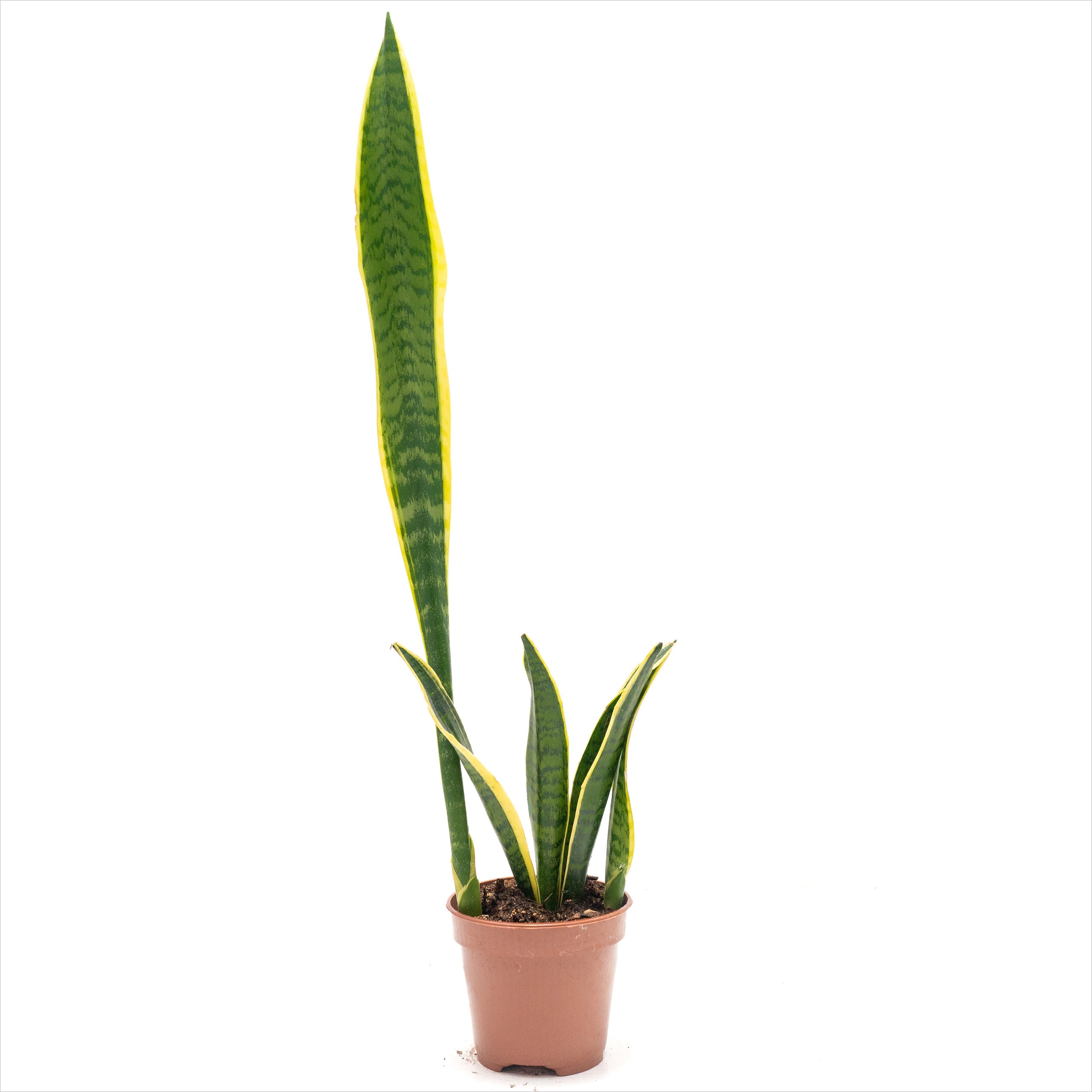
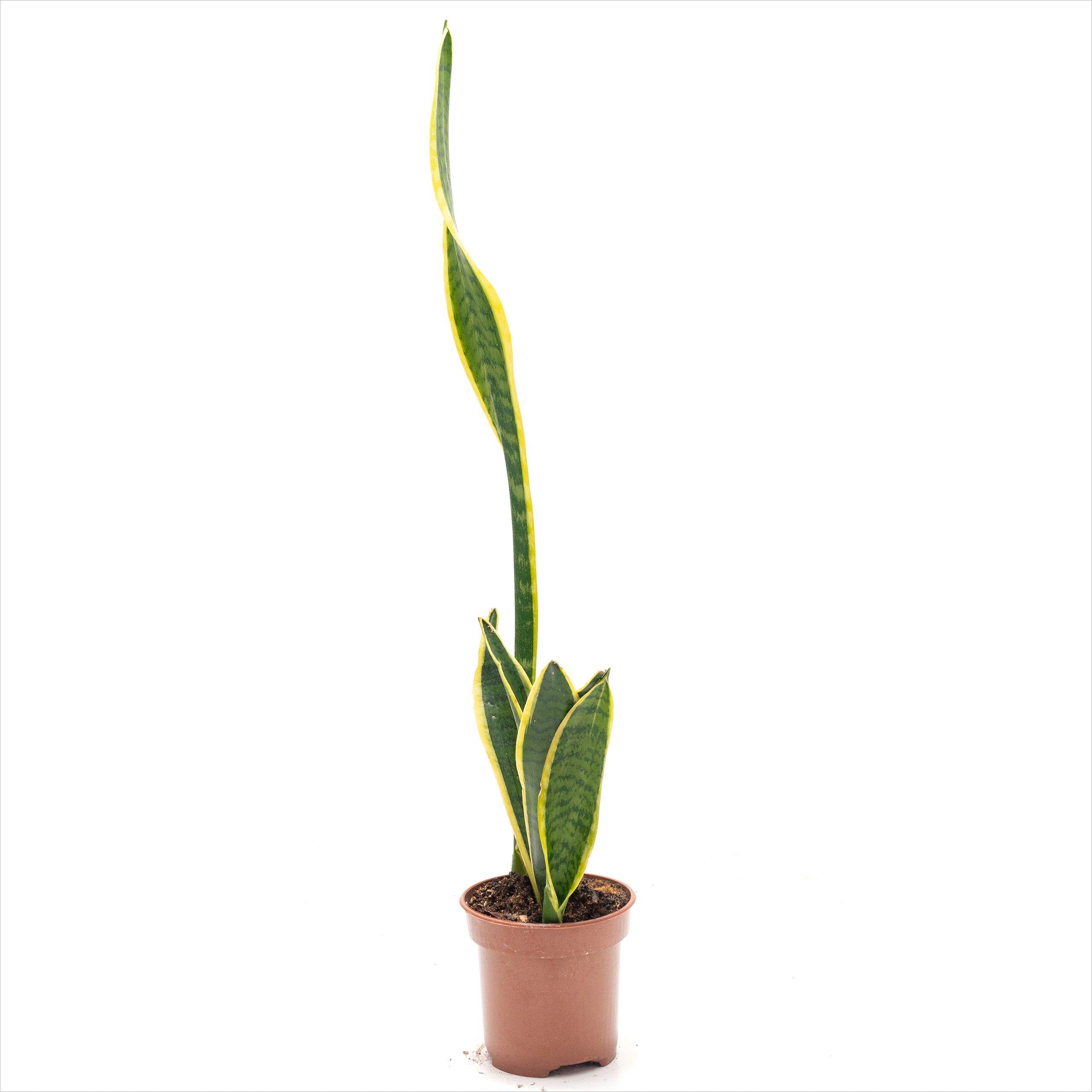
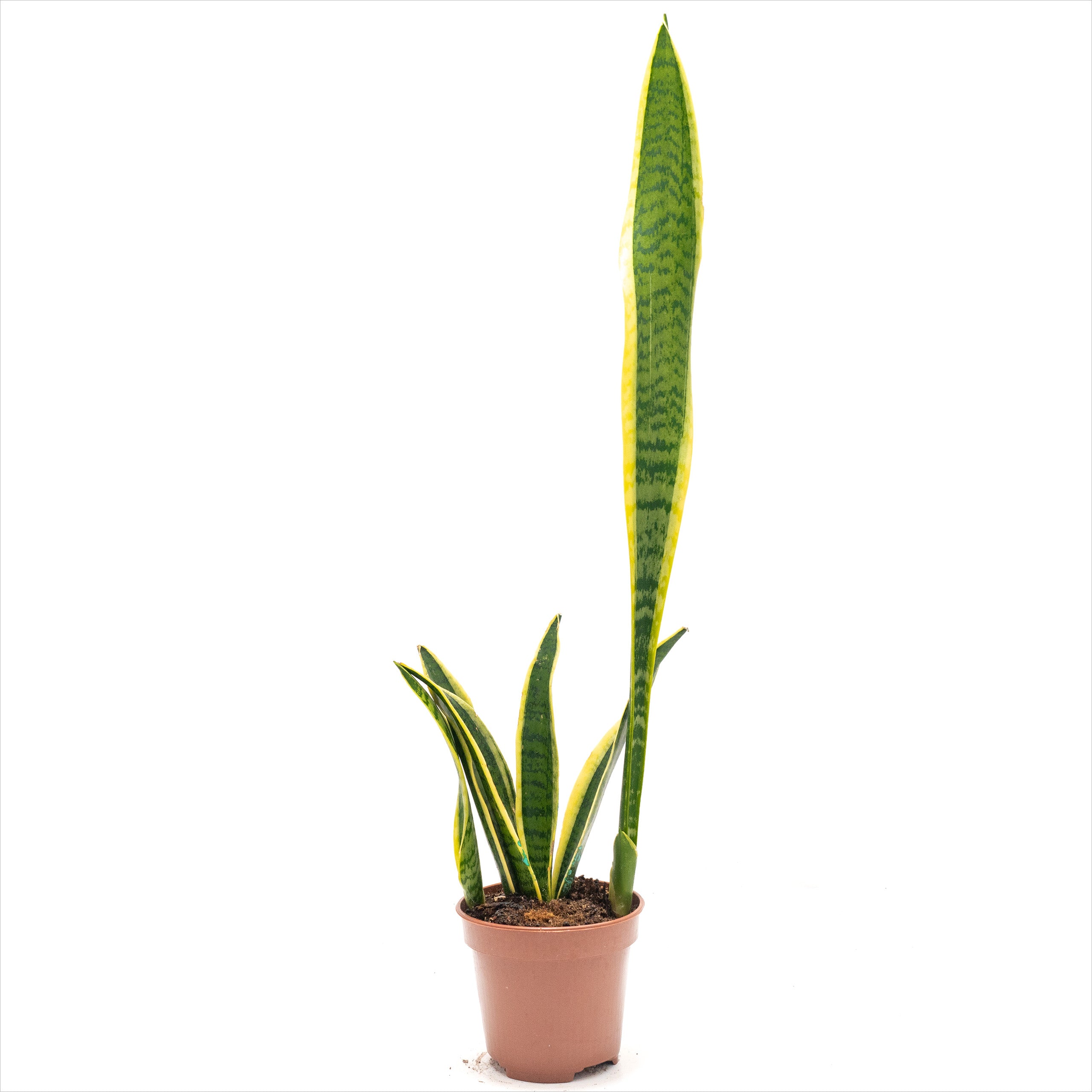
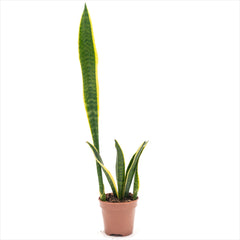
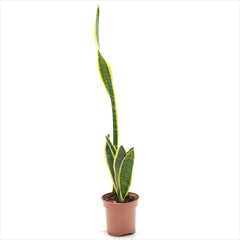
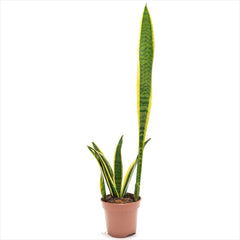
Sansevieria Laurentii 'Snake Plant'
Description:
Sansevieria laurentii 'Snake' is a popular, hardy, and low-maintenance houseplant known for its striking, upright sword-like leaves. The leaves feature vibrant green with yellow margins, creating a dramatic contrast that makes this plant a standout in any room. Snake plants are ideal for beginners due to their tolerance for various growing conditions, including low light and irregular watering. Not only is this plant visually appealing, but it's also an air purifier, helping to remove toxins from indoor environments.
Watering:
Water when the top 2-3 inches of soil are dry to the touch. Sansevieria laurentii prefers to be on the drier side and can tolerate some neglect when it comes to watering. Overwatering can lead to root rot, so it’s essential to ensure the pot has good drainage. During the Winter months, reduce watering, as the plant's growth slows down. Always let the soil dry out completely before watering again.
Fertilizer:
Feed with a balanced, diluted liquid fertilizer once every 4-6 weeks during the growing season (Spring and Summer). In the Fall and Winter, reduce or stop fertilizing, as the plant’s growth slows down. Be cautious not to over-fertilize, as this can lead to weak or leggy growth.
Lighting:
Sansevieria laurentii 'Snake' is incredibly adaptable and can thrive in a wide range of light conditions, from low light to bright, indirect light. However, it grows best in bright, indirect light. Direct sunlight can scorch its leaves, so it’s best to keep it out of direct sunlight. In lower light, growth may slow, but the plant will still remain healthy.
Temperature:
Thrives in temperatures between 60-85°F (16-29°C). Sansevieria laurentii is tolerant of warmer conditions but should be kept away from cold drafts and temperatures below 50°F (10°C), as it’s sensitive to cold weather. A stable, warm environment is ideal.
Humidity:
Sansevieria laurentii is quite tolerant of dry air and can thrive in average household humidity. It doesn’t require high humidity to grow well, making it an excellent choice for areas with lower humidity. If the air is excessively dry, occasional misting can help, but it is not necessary.

